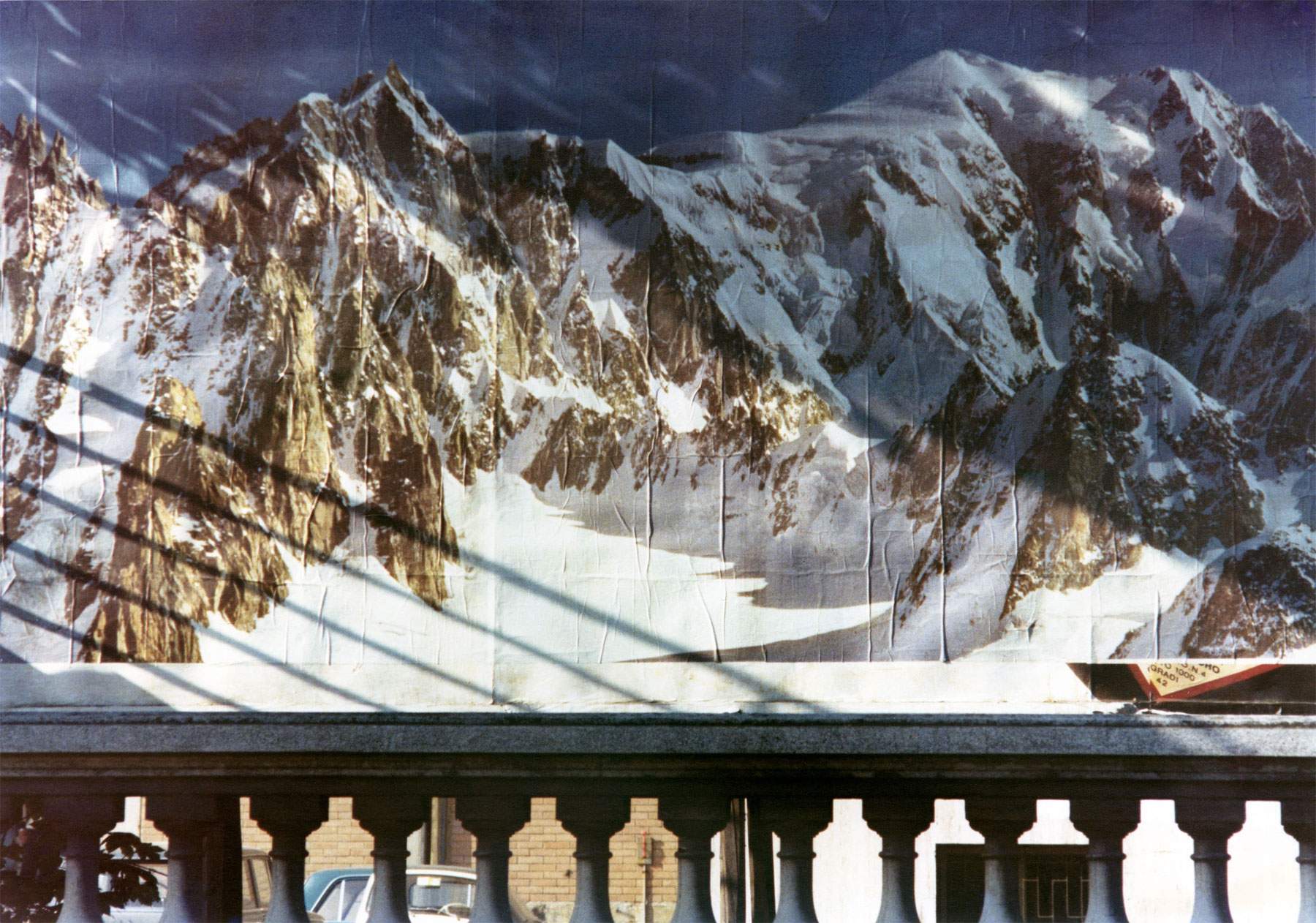A new section entirely dedicated to photography for the Reggio Emilia Civic Museums, which recently inaugurated the second floor of the Palazzo dei Musei, a new space redesigned and refurbished by architect Italo Rota (in dialogue for more than a decade with the museum’s management) with the contribution of a team of conservators, researchers and curators of the collections and in close relationship with the city. Photography plays a central role in the city’s history, starting with the experience of Luigi Ghirri (Scandiano, 1943 - Reggio Emilia, 1992): a kind of photographic obsession that is reflected in the important Panizzi Library Photo Library, the collections of the Civic Museums, the Fotografia Europea festival and the Young Italian Photography project.
The renovated second floor of Palazzo dei Musei thus hosts a permanent section on photography, inaugurated with the exhibition The Weft of the Visible, but that’s not all: in fact, the interventions have created, throughout the itinerary, moments of encounter between the objects from the Museum’s collections and the images on display: all the exhibition proposals aim to expand the dimension of the gaze, which in the museum experience is a privileged means of knowledge. “In Reggio Emilia,” said architect Italo Rota, “photography is parallel to the passion for music. It is almost a collective obsession, of the highest quality.”
Then there is an entire permanent section dedicated to Luigi Ghirri, whose 40 images on display constitute a selection taken from Paesaggi di cartone, a hand-bound album by Ghirri himself containing 111 photographs taken in the early 1970s. The album, which reached MoMA in 1975, was forgotten for nearly four decades until, in 2020, Quentin Bajac, curator of the photography department, tracked it down along with other materials by the author and, in the same year, the museum decided to publish it in an unabridged facsimile edition. The research of Ghirri, one of the most influential contemporary photographers, focuses on issues such as perception, representation and the status of the image and is open to contaminations from literature, philosophy, music and art. The space dedicated to him, conceived in collaboration with the Luigi Ghirri Heirs Archive, aims to offer new insights through contributions and new perspectives, following Ghirri’s own words that photography “renews amazement on a daily basis,” and renewing itself will also be the works on display, which will rotate annually to account for his articulate and rich production.
The Weft of the Visible, which can be visited until December 31, 2021, is the other permanent section and takes off from the collection of Fotografia Europea to build an evolving path that, through different keys of interpretation each time, questions photography and the future of images. The first theme addressed is that of materiality and puts the emphasis on how photography is, first of all, an object that exists in space and time by presenting the work of authors who, also through direct action, have questioned the matter that constitutes photography, revealing the substance of the image and its metabolism. Thanks to specific loan requests and commissions, the section is a cue for a broader research broader that seeks to actualize and deepen the issues addressed by authors such as Luigi Veronesi, Nino Migliori, Franco Vaccari, Paolo Gioli, Davide Mosconi, Aldo Tagliaferro, Franco Vimercati, Marina Ballo Charmet, Paola Di Bello, Paola de Pietri, Joan Fontcuberta, Patrizio Esposito, Bernard Plossu, Mario Dondero, Klavdij Sluban, Sarah Moon, Seba Kurtis, Arianna Arcara, Luca Santese, Batia Suter, Simone Schiesari and Lorenzo Vitturi.
The Museum’s interest in photography is translated, as anticipated, into a timely inclusion of works from the Panizzi Library’s Photo Library, the collection of Fotografia Europea and the Civic Museums within the reorganization of the collections. Taking its cue from Alfabeto, a work created in 1973 by Claudio Parmiggiani and composed of 21 shots taken by Luigi Ghirri, in which museum objects become a sort of “alphabet for the eyes,” Palazzo dei Musei proposes itself as an innovative display for the valorization of the acquired works, capable of interweaving the themes solicited by the historical heritage with new ways of public participation.
A selection of shots from the historic 1986 project Explorations on the Via Emilia. Writings in the Landscape with photographs by Olivo Barbieri, Gabriele Basilico, Vincenzo Castella, Giovanni Chiaramonte, Vittore Fossati, Luigi Ghirri, Guido Guidi, Mimmo Jodice, Klaus Kinold, Claude Nori, Cuchi White and Manfred Willmann dialogues with archaeological materials from the Roman Via Emilia. Also on display is a substantial nucleus of works, about a hundred in number, from Olivo Barbieri’s Ersatz Lights series, whose landscapes, immortalized around the world, are the focus of a reflection on light. The series provides a counterpoint to objects drawn from major civic collections that evocatively render a cross-section of the current Reggio Emilia community. Also featured are some shots from the group exhibition AEmilia, a photographic survey of the territory promoted in 1996 by the Panizzi Library Photo Library, in which the protagonists are the city’s inhabitants. Also numerous are works from the Fotografia Europea collection presented in an evocative dialogue with objects from the collections (photographs by Joan Fontcuberta, Gabriele Basilico, Cristina De Middel, David Steward, Martin Parr, Alain Bublex, Alessandra Calò, Fabrizio Cicconi, Kai-Uwe Schulte-Bunert, Sarah Moon, Aino Kannisto and Fabian Albertini).
Photo: Luigi Ghirri, Reggio Emilia, 1974 © Eredi Luigi Ghirri
 |
| Reggio Emilia, Civic Museums open permanent sections on photography and Luigi Ghirri |
Warning: the translation into English of the original Italian article was created using automatic tools. We undertake to review all articles, but we do not guarantee the total absence of inaccuracies in the translation due to the program. You can find the original by clicking on the ITA button. If you find any mistake,please contact us.